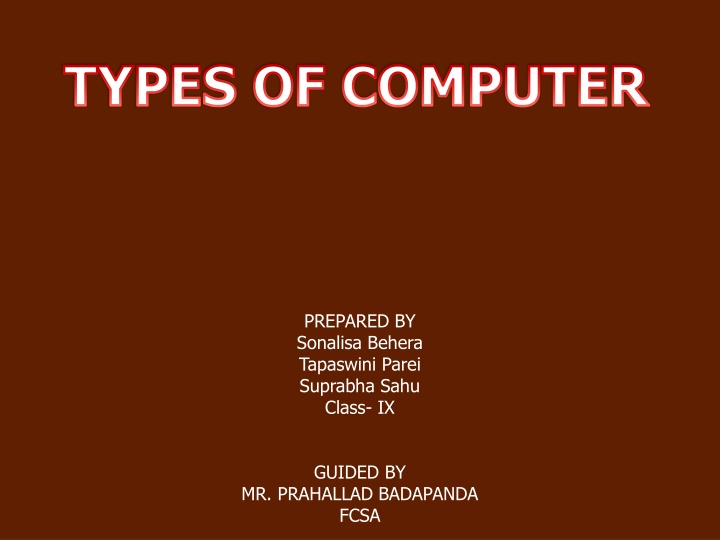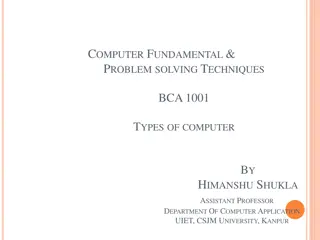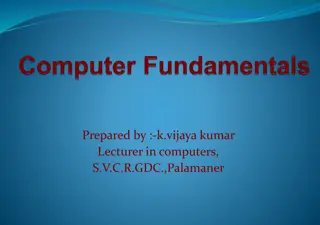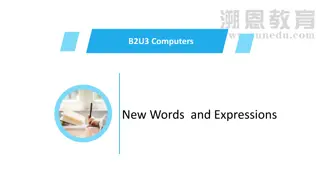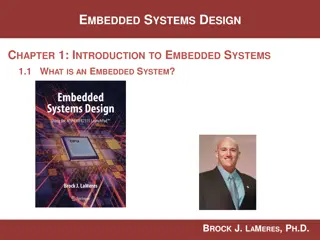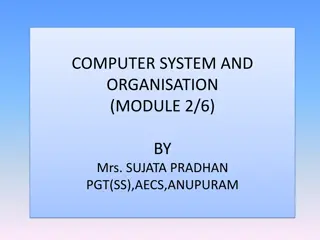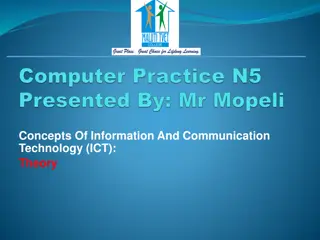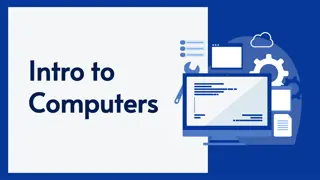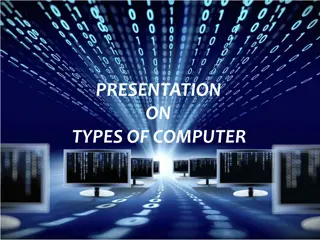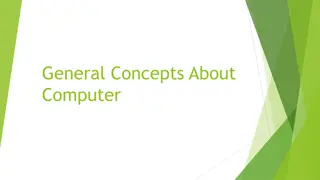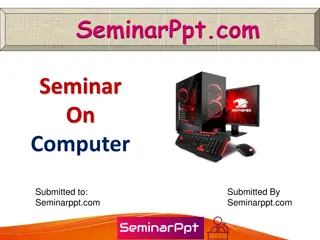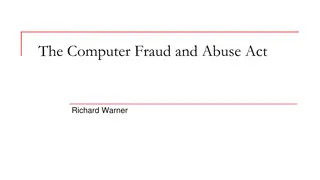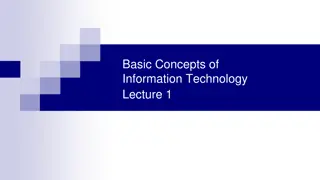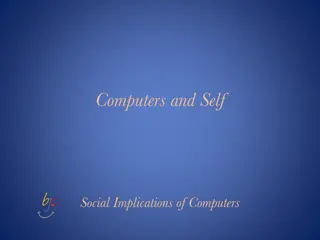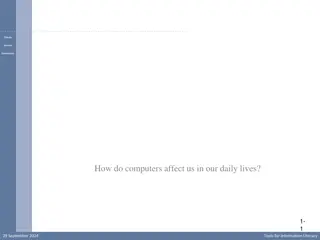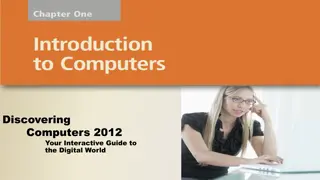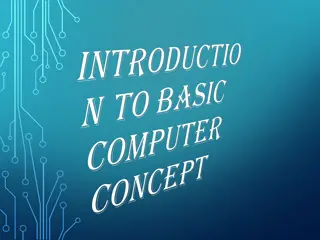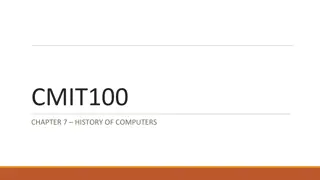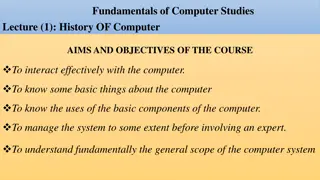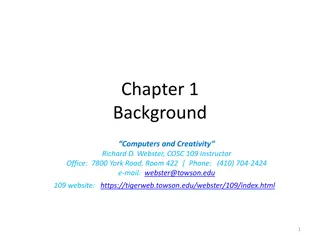Overview of Different Types of Computers
This content provides insights into various types of computers, including analog, digital, micro, mini, mainframe, and supercomputers. It explains the characteristics and applications of each type, helping readers understand the distinctions and functionalities of different computer systems.
Uploaded on Mar 09, 2025 | 0 Views
Download Presentation

Please find below an Image/Link to download the presentation.
The content on the website is provided AS IS for your information and personal use only. It may not be sold, licensed, or shared on other websites without obtaining consent from the author.If you encounter any issues during the download, it is possible that the publisher has removed the file from their server.
You are allowed to download the files provided on this website for personal or commercial use, subject to the condition that they are used lawfully. All files are the property of their respective owners.
The content on the website is provided AS IS for your information and personal use only. It may not be sold, licensed, or shared on other websites without obtaining consent from the author.
E N D
Presentation Transcript
TYPES OF COMPUTER PREPARED BY Sonalisa Behera Tapaswini Parei Suprabha Sahu Class- IX GUIDED BY MR. PRAHALLAD BADAPANDA FCSA
Types of computer Type of computer Digital computer Analog computer Hybrid Computer Mini Micro Computer Main frame Computer Super Computer Computer Home PC
Analog computer Analog computer measures and answer the questions by the method of HOW MUCH . The input data is not a number infect a physical quantity like temp, pressure, speed, velocity. Signals are continuous of (0 to 10 V) Accuracy 1% Approximately High speed Output is continuous Time is wasted in transmission time
Digital Computers Digital computer counts and answer the questions by the method of HOW Many . The input data is represented by a number. These are used for the logical and arithmetic operations. Signals are two level of (0 V or 5 V) Accuracy unlimited low speed sequential as well as parallel processing Output is continuous but obtain when computation is completed.
Micro Computer Micro computer are the smallest computer system. There size range from calculator to desktop size. Its CPU is microprocessor. It also known as Grand child Computer. Application : - personal computer, Multi user system, offices.
Mini Computer These are also small general purpose system. They are generally more powerful and most useful as compared to micro computer. Mini computer are also known as mid range computer or Child computer. Application :- Departmental systems, Network Servers, work group system.
Main Frame Computer Mainframe computers are those computers that offer faster processing and grater storage area. The word main frame comes from the metal frames. It is also known as Father computer. Application Host computer, Central data base server.
Super Computer Super computer are those computer which are designed for scientific job like whether forecasting and artificial intelligence etc. They are fastest and expensive. A super computer contains a number of CPU which operate in parallel to make it faster. It also known as grand father computer. Application whether forecasting, weapons research and development.
Classification of Digital computer Desktop Workstation Notebook Tablet PC Handheld computer Smart Phone
